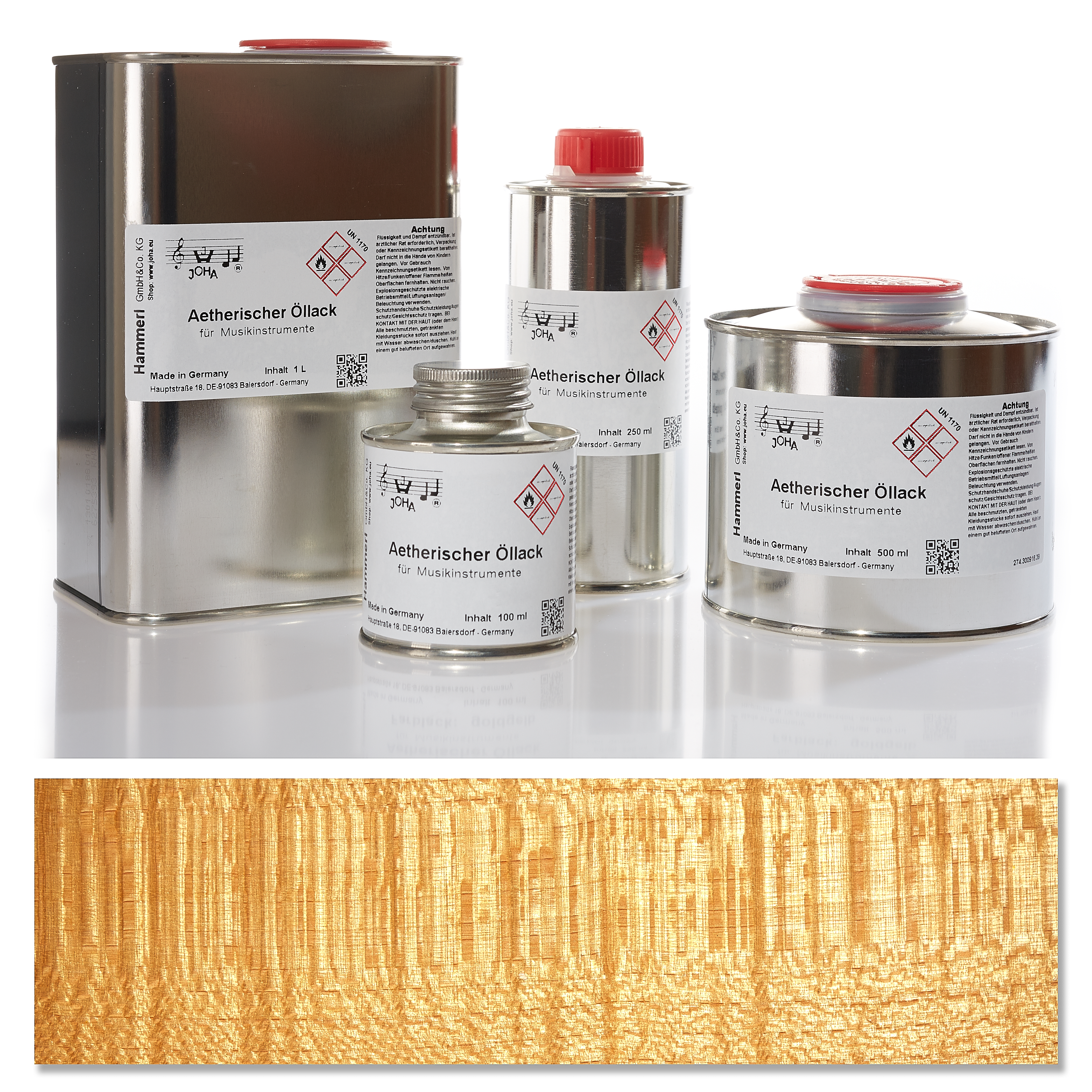Volatile oil varnish, primer
€20.40
Available, delivery time: 2-3 days
Product information "Volatile oil varnish, primer"
JOHA® Volatile Oil Varnish is a premium alcohol-based volatile oil varnish specially developed for finishing high-quality string instruments. Based on a traditional recipe, it is made from pure, very high-quality natural resins. The addition of selected volatile oils gives the varnish excellent elasticity after drying, enhances the instrument’s tonal quality, and creates a deep, radiant appearance.
Compared to spirit varnishes, this varnish is somewhat easier to apply but requires significantly more drying time. Its tonal and visual properties make it particularly suitable for demanding restoration and new construction in fine instrument making.
Properties:
- Made from pure, very high-quality natural resins and volatile oils
- Slightly longer open time than Spirit Varnish Ia – therefore easy to work with
- Elastic and durable after drying
- Excellent tonal properties – ideal for high-end instruments
Application Note:
JOHA® Volatile Oil Varnish is intended for experienced varnishers and instrument makers who value a visually refined and acoustically enhancing finish. Application is less demanding than with spirit varnishes, but due attention is required due to the slightly longer drying time.
Recommended Use:
Ideal for varnishing and restoring high-quality string instruments, especially within a traditional multi-layered varnish system.
Note on Varnish Structure:
For best results, a classic three-layer system is recommended: Ground varnish – Color varnish – Coating.
- Ground varnish: Applied directly to the wood for excellent adhesion. Hardest layer in the system.
- Color varnish: Applied over the ground varnish, can be clear or tinted. Slightly softer.
- Coating: Final layer, softest in the system, provides depth and surface gloss.
Drying Times:
Drying time depends on ambient temperature, humidity, and air circulation. Under optimal conditions (approx. 18 °C / 64 °F and 55% relative humidity), one coat dries in approximately 1 to 7 days. Thicker applications may require extended drying times.
Use the thumb test to check dryness: if no fingerprint remains when gently pressing the surface, the layer is dry.
Login


